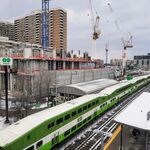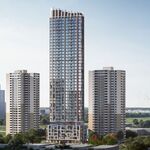RyLucky
Active Member
Removing stops to allow for faster trains won't necessarily lead to faster trip times, because of two factors
Loading (dwell) times: Say you remove half the stations on the line. Each of the remainding stations will now have twice as many passengers boarding, and twice the dwell time in station. (Example is a simplification)
Bus travel time: Increase stop spacing from 1 km to 2 km, and speeds on the train might increase from 40 km/h to 60 km/h. But people now need to spend another 15 minutes walking or 5 minutes on the bus to get to the station. You've now made total trip times longer by removing stations.
Sure. You're right. fewer stops won't necessarily guarantee shorter travel times. I would always advocate access first before express. I like the Crosstown stop spacing for the most part, because we are talking about a dramatic increase in travel range/time for those near the line.
However, you can't deny that a second line 1 that only stopped at North York, Eglinton, Bloor, Dundas, and Union would be faster for the 60% of riders who only need those stops.




